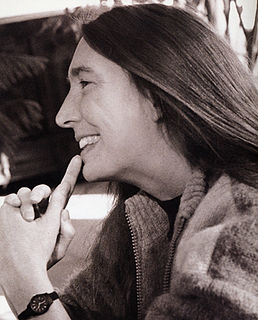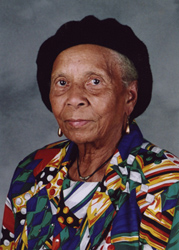Women in art may refer to:
- Art featuring women as subjects
- Women artists
- Women in Arts Award, a Ukrainian award
- Women in the art history field
- Women in Philippine art
- Women in dance
- Women in music
- Women in film
Women in art may refer to:

The Grammy Award, or just Grammy, is an award presented by the Recording Academy to recognize achievement in the music industry. The trophy depicts a gilded gramophone. The annual presentation ceremony features performances by prominent artists, and the presentation of awards that have more popular interest. The Grammys are the first awards of the Big Three networks' major music awards held annually.

The Turner Prize, named after the English painter J. M. W. Turner, is an annual prize presented to a British visual artist. Between 1991 and 2016, only artists under the age of 50 were eligible. Awarding the prize is organised by the Tate gallery and usually staged at Tate Britain, though in recent years the award ceremony has sometimes been held in other UK cities. Since its beginnings in 1984 it has become the UK's most publicised art award. The award represents all media.
AAA, Triple A, or Triple-A is a three-letter initialism or abbreviation which may refer to:

Loretta Lynn is an American singer songwriter. In a career which spans six decades in country music, Lynn has released multiple gold albums. She is famous for hits such as "You Ain't Woman Enough ", "Don't Come Home A-Drinkin' ", "One's on the Way", "Fist City" and "Coal Miner's Daughter" along with the 1980 biographical film of the same name.
Guerrilla Girls is an anonymous group of feminist, female artists devoted to fighting sexism and racism within the art world. The group formed in New York City in 1985 with the mission of bringing gender and racial inequality into focus within the greater arts community. The group employs culture jamming in the form of posters, books, billboards, and public appearances to expose discrimination and corruption. To remain anonymous, members don gorilla masks and use pseudonyms that refer to deceased female artists. According to GG1, identities are concealed because issues matter more than individual identities, "Mainly, we wanted the focus to be on the issues, not on our personalities or our own work."

Artemisia Lomi or Artemisia Gentileschi was an Italian Baroque painter. Artemisia is considered among the most accomplished seventeenth-century artists, initially working in the style of Caravaggio. She was producing professional work by the age of fifteen. In an era when women had few opportunities to pursue artistic training or work as professional artists, Artemisia was the first woman to become a member of the Accademia di Arte del Disegno in Florence and she had an international clientele.

Jenny Holzer is an American neo-conceptual artist, based in Hoosick, New York. The main focus of her work is the delivery of words and ideas in public spaces.

The Pennsylvania Academy of the Fine Arts (PAFA) is a museum and art school in Philadelphia, Pennsylvania. It was founded in 1805 and is the first and oldest art museum and art school in the United States. The academy's museum is internationally known for its collections of 19th- and 20th-century American paintings, sculptures, and works on paper. Its archives house important materials for the study of American art history, museums, and art training. Pennsylvania Academy of the Fine Arts won the 2020 Webby Award for School / University in the category Web.
Jonathan Jones is a British art critic who has written for The Guardian since 1999. He has appeared in the BBC television series Private Life of a Masterpiece and in 2009 was a judge for the Turner Prize. He has also been a judge for the BP Portrait Award.

Elizabeth Catlett was an American and Mexican sculptor and graphic artist best known for her depictions of the Black-American experience in the 20th century, which often focused on the female experience. She was born and raised in Washington, D.C. to parents working in education, and was the grandchild of formerly enslaved people. It was difficult for a black woman at this time to pursue a career as a working artist. Catlett devoted much of her career to teaching. However, a fellowship awarded to her in 1946 allowed her to travel to Mexico City, where she worked with the Taller de Gráfica Popular for twenty years and became head of the sculpture department for the Escuela Nacional de Artes Plásticas. In the 1950s, her main means of artistic expression shifted from print to sculpture, though she never gave up the former.
Carel is a given name, and may refer to:
The Sobey Art Award is Canada's largest prize for young Canadian artists. It is named after Canadian businessperson and art collector Frank H. Sobey, who established The Sobey Art Foundation. It is an annual prize given to an artist 40 and under who has exhibited in a public or commercial art gallery within 18 months of being nominated. A jury consisting of an international juror and representatives of galleries from the West Coast and the Yukon, the Prairies and the North, Ontario, Quebec and the Atlantic Provinces creates a longlist of 25 artists, five from each region. The jury meets to select the winner and four other finalists, one from each region. 2017 was the first year to see the shortlist dominated by women and also the first year that more than one Indigenous artist was shortlisted.

Margaret Taylor-Burroughs, also known as Margaret Taylor Goss, Margaret Taylor Goss Burroughs or Margaret T G Burroughs, was an American visual artist, writer, poet, educator, and arts organizer. She co-founded the Ebony Museum of Chicago, now the DuSable Museum of African American History. An active member of the African-American community, she also helped to establish the South Side Community Art Center, whose opening on May 1, 1941 was dedicated by the First Lady of the United States Eleanor Roosevelt. There, at the age of 23, Burroughs served as the youngest member of its board of directors. A long-time educator, she spent most of her career at DuSable High School. Taylor-Burroughs was a prolific writer, with her efforts directed toward the exploration of the Black experience and toward children, especially to their appreciation of their cultural identity and to their introduction and growing awareness of art. She is also credited with the founding of Chicago's Lake Meadows Art Fair in the early 1950s.
Coco Fusco is a Cuban-American interdisciplinary artist, writer, and curator whose work has been exhibited and published internationally. Fusco's work explores gender, identity, race, and power through performance, video, interactive installations, and critical writing.
Amanda Dunbar is a Texas-based artist who gained notoriety at an early age for her oil painting skills. Amanda Dunbar began painting in an after school art class at the age of 13. Her spontaneous and advanced works acquired significant interest immediately. Amanda is currently listed as a prodigy of the visual arts in the current textbooks for advanced university education entitled "Child Psychology" by John Wiley & Sons Canada, Ltd.

Makinti Napanangka was a Pintupi-speaking Indigenous Australian artist from Australia's Western Desert region. She was referred to posthumously as Kumentje. The term Kumentje was used instead of her personal name as it is customary among many indigenous communities not to refer to deceased people by their original given names for some time after their deaths. She lived in the communities of Haasts Bluff, Papunya, and later at Kintore, about 50 kilometres (31 mi) north-east of the Lake MacDonald region where she was born, on the border of the Northern Territory and Western Australia.
Shelley Niro is a Mohawk filmmaker and visual artist from New York and Ontario. She is known for her photographs using herself and female family members cast in contemporary positions to challenge the stereotypes and clichés of Native American women.
The National Association of Women Artists, Inc. (NAWA) is a United States organization, founded in 1889 to gain recognition for professional women fine artists in an era when that field was strongly male-oriented. It sponsors exhibitions, awards and prizes, and organizes lectures and special events.
The Women's Caucus for Art (WCA), founded in 1972, is a non-profit organization based in New York City, which supports women artists, art historians, students, educators, and museum professionals. The WCA holds exhibitions and conferences to promote women artists and their works and recognizes the talents of artists through their annual Lifetime Achievement Award. Since 1975 it has been a United Nations-affiliated non-governmental organization (NGO), which has broadened its influence beyond the United States. Within the WCA are several special interest causes including the Women of Color caucus, Eco-Art Caucus, Jewish Women Artist Network, International Caucus and the Young Women's Caucus. The founding of the WCA is seen as a "great stride" in the feminist art movement.

Women were professionally active in the academic discipline of art history in the nineteenth century and participated in the important shift early in the century that began involving an "emphatically corporeal visual subject", with Vernon Lee as a notable example. It is argued that in the twentieth century women art historians, by choosing to study women artists, "dramatically" "increased their visibility". Women art historians are one of two groups "who say there have been great women artists" in the first place, according to the authors of a study of the representations of women artists in US textbooks.